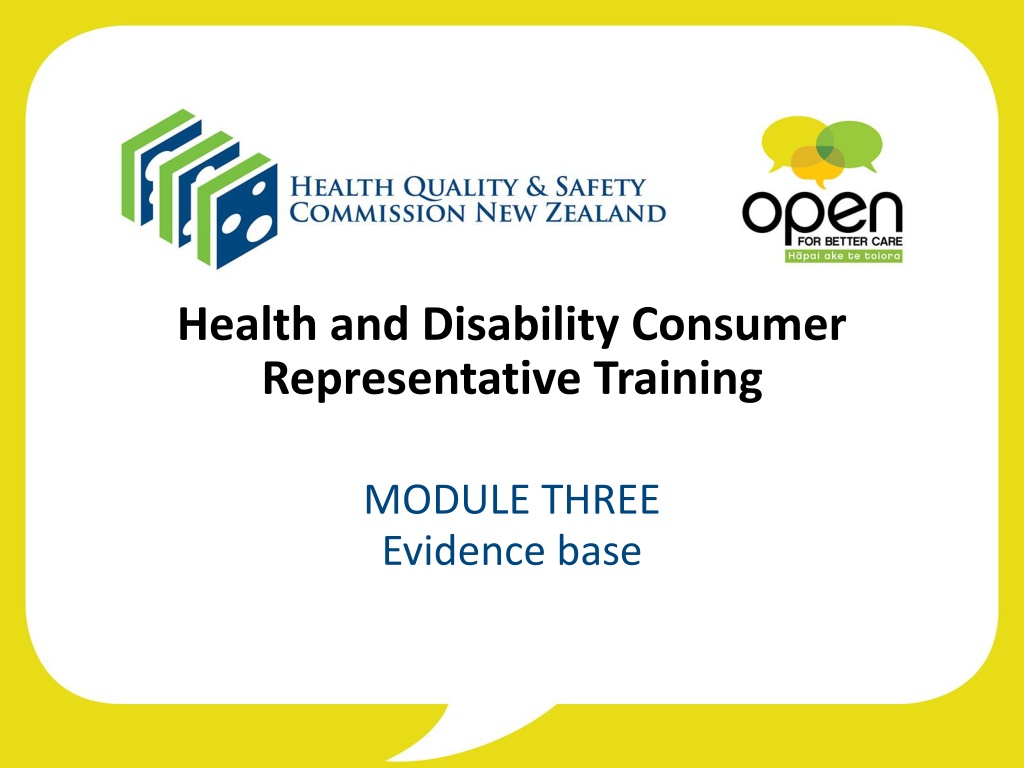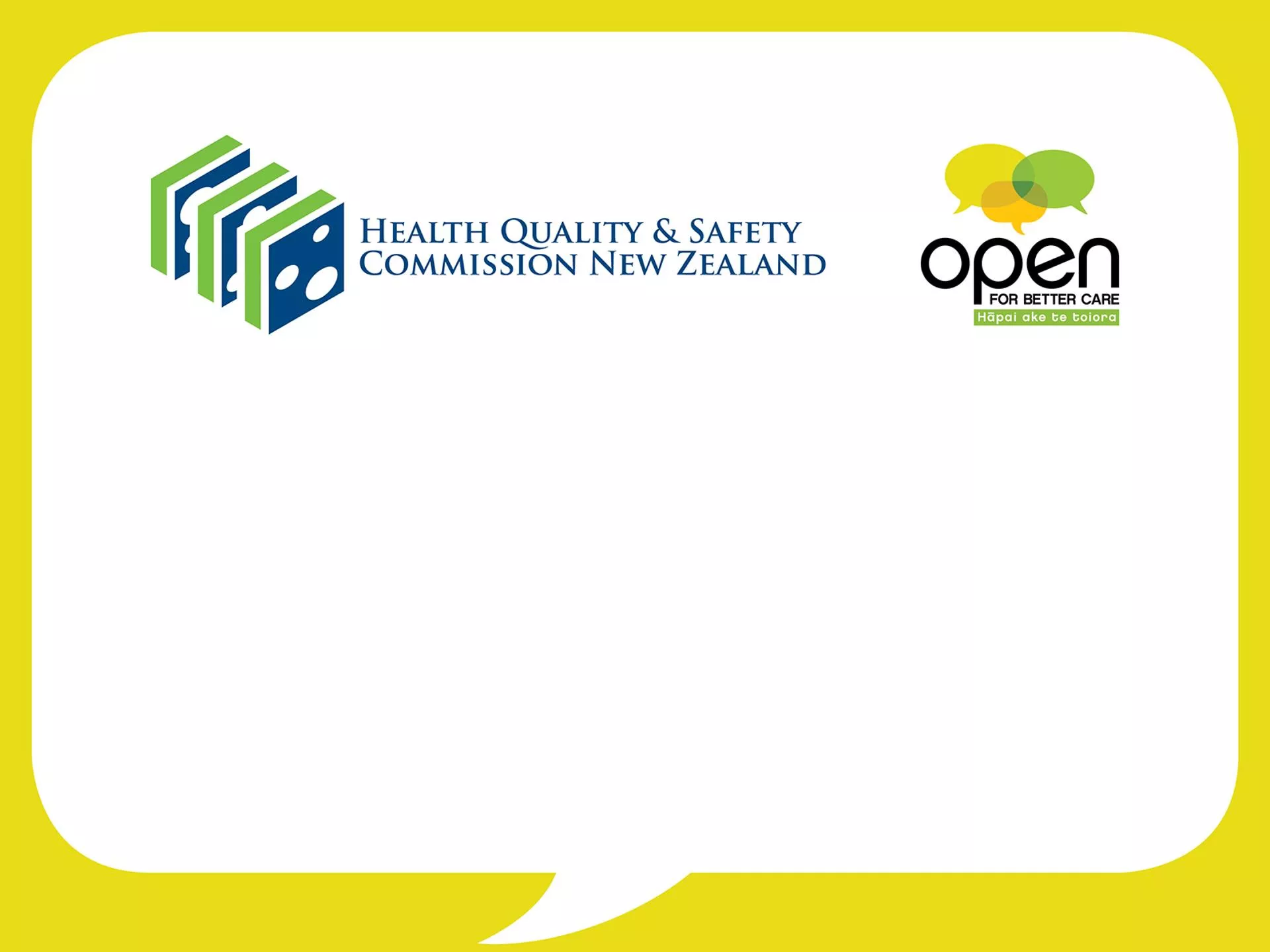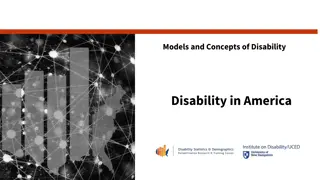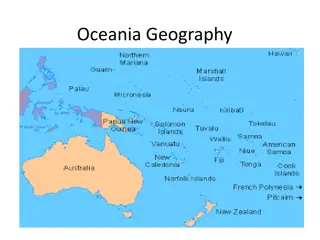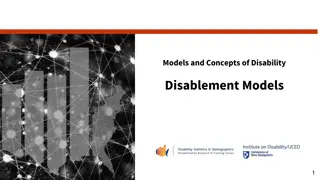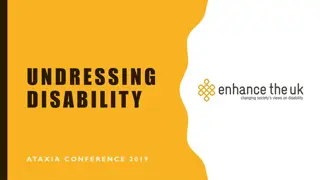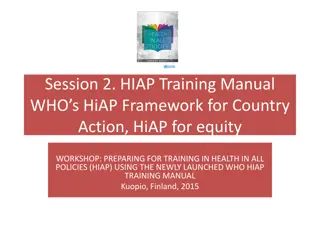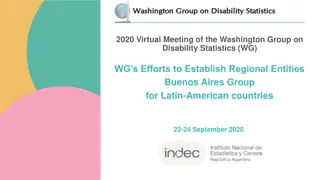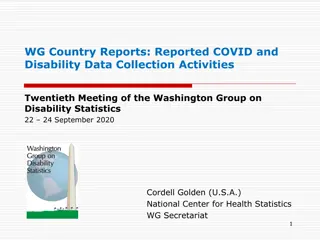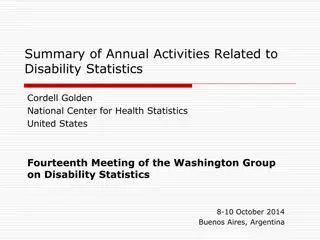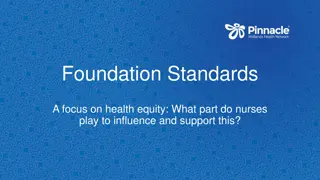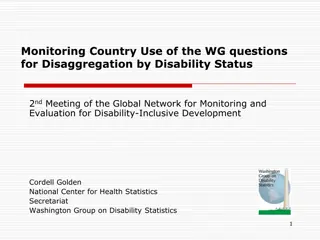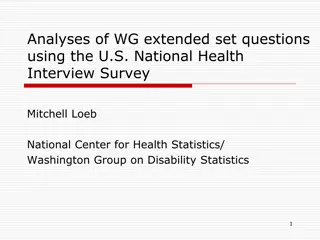Understanding Health Equity in New Zealand's Health and Disability Sector
This module covers topics such as consumer engagement, roles and responsibilities, partnership, inequities, research, clinical trials, and more in the context of New Zealand's health and disability sector. It includes discussions on the factors influencing health equity and aims to increase knowledge on research and clinical trials for positive change. Visual aids and definitions provided for better understanding.
Download Presentation

Please find below an Image/Link to download the presentation.
The content on the website is provided AS IS for your information and personal use only. It may not be sold, licensed, or shared on other websites without obtaining consent from the author. Download presentation by click this link. If you encounter any issues during the download, it is possible that the publisher has removed the file from their server.
E N D
Presentation Transcript
Health and Disability Consumer Representative Training MODULE THREE Evidence base
Welcome Housekeeping Ground rules Introductions - who we are and our backgrounds 2
The NZ health and disability environment Consumer engagement Your experience Roles & responsibilities Meetings Health and disability context Experience base 1 2 4 3 Evidence base Partnership Leadership Co-design Peer support Inequities Research Clinical trials 3
Health and disability context Experience base 1 2 4 3 Evidence base Partnership Inequities Research Clinical trials 4
Goals for the day To understand the equity issues for different groups in New Zealand s health and disability sector. To increase your knowledge about research in health and disability sector as the evidence base for change and improvement. To learn about clinical trials and how you can be involved in these. 5
Image courtesy of Interaction Institute for Social Change | Artist: Angus Maguire. http://interactioninstitute.org | www.madewithangus.com 6
What is health equity? the absence of avoidable differences among groups of people, whether these groups are defined socially, economically, demographically or geographically (World Health Organization) The presence of systematic disparities in health between groups (Fact and Action Sheets on Health Inequities, New Zealand Medical Association, 2011) avoidable, unnecessary and unjust differences in the health of groups of people. (Reducing Inequalities in Health, Ministry of Health, 2002) 7
Factors that can influence health equity Age. Gender. Ethnicity. Poverty (deprivation). Socioeconomic position. Impairment. Geographical region. Housing. Health care service designs Government policies. 8
Health inequities in New Zealand There is considerable evidence, both internationally and in New Zealand, of significant inequalities in health between socioeconomic groups, ethnic groups, people living in different geographical regions and males and females Acheson D. 1998. Independent Inquiry into Inequalities in Health. London. Howden-Chapman P, Tobias M (eds). 2000. Social Inequalities in Health: New Zealand 1999. Wellington: Ministry of Health. 9
Health inequities for Maori and Pacific peoples Ethnic identity is an important dimension of health inequities. M ori and Pacific peoples experience lower life expectancy and health disadvantage across most mortality and morbidity indicators compared with P keh . (The pervasive effects of racism: experiences of racial discrimination in New Zealand over time and associations with multiple health domains, Harris & Cormack et al, 2012) 10
Inequities in health Mori M ori populations still have higher levels of unmet need for GP care than non-M ori, are more than twice as likely as non-M ori to have reported not collecting prescriptions. (Tatau Kahukura: M ori Health Chart Book 2015, 3rd edition, Ministry of Health, 2015) M ori health status remains unequal across almost all chronic and infectious diseases as well as injuries, including suicide. M ori life expectancy is considerably lower than non-M ori. Mortality rates are also higher for M ori at nearly all ages. 11
Urgent call to improve medicine access for M ori New research is painting a bleak picture of the problems M ori patients face in getting equitable access to medicines. Dr Matire Harwood (Ngapuhi) says the latest research shows a clear and urgent need to improve medicines management services, but there are positive signs at a grass roots level. (From Nine To Noon, 9:33 am on 11 July 2018) https://www.radionz.co.nz/national/programmes/ninetonoon/audio/2018653116/urge nt-call-to-improve-medicine-access-for-maori 12
Inequities in health Pacific people Ala Mo ui Progress Report June 2016: Life expectancy of Pacific men = 74.5 years 5 years less than for total men in New Zealand. Life expectancy of Pacific women = 78.7 years 4.5 years less than for total women in New Zealand. Poor health outcomes are related to social determinants, such as income, employment, housing quality and education ( Ala Mo Ui: Pathways to Pacific Health and Wellbeing 2014 2018, Ministry of Health, 2014) 13
Te Kaveinga - Mental health and wellbeing of Pacific peoples: Report Pacific peoples are well connected socially and culturally. Pacific peoples, on average, report higher psychological distress and depressive symptoms. Stigma surrounding mental health issues is high among Pacific peoples. Some Pacific peoples don t know where to get help for mental distress and awareness of national mental health websites is low. 14
Le Va website Supports and encourages Pasifika families and communities to unleash their full potential. Designs and develops evidence-based resources, tools, information, knowledge and support services for the best possible health and wellbeing outcomes. Recalls and applies traditional values in a contemporary way. 15
Inequities in health Asian people Positive health outcomes are shown in a range of health indicators for Asian ethnic groups, especially Chinese. However, indicators among Indian ethnic group, include: Self-reported diabetes over three times higher. Indian boys are 1.5 times more likely to be hospitalised for asthma. Indian males and females have significantly higher cardiovascular disease hospitalisation and mortality rates. (Asian Health Chart Book, Ministry of Health, 2006) 16
Group discussion What other groups of people might experience inequities in health care, and how? 17
Addressing inequalities DHBs have a statutory responsibility under the New Zealand Public Health and Disability Act 2000 to: reduce health inequalities in their regions. improve outcomes for M ori. Tools and strategies developed to help achieve this include: Health Equity Assessment Tool (Ministry of Health). He Korowai Oranga NZ s M ori Health Strategy. Equity of Health Care for M ori: A framework. Atlas of Healthcare Variation (HQSC). 18
Atlas of Healthcare Variation Developed by the Commission to show variations in the health care received by people in different geographical regions of New Zealand. Designed to raise questions about health service use and to stimulate improvement through debate. Organised by 16 domains, which cover specific clinical areas. An online tool on the Commission s website, includes easy-to- use maps, graphs, tables and commentary. 19
Next three topics Health and disability research Clinical trials Consumer involvement 21
Health & disability research The HRC is responsible for managing the Government s investment in health research. The New Zealand Health Research Strategy 2017-2027 aims to: 1. Invest in excellent health research that addresses the health needs of all New Zealanders. 2. Create a vibrant research environment in the health sector. 3. Build and strengthen pathways for translating research findings into policy and practice. 4. Advance innovative ideas and commercial opportunities. 22
Ethics of including consumers in research Health Research Council of New Zealand (HRC) is committed to ensuring that all research involving human participants is based on good science, meets ethical standards and complies with international best practice: research involving human participants funded by HRC requires appropriate ethical approval HRC funded clinical trials, evaluations or intervention studies are monitored to ensure safety of participants and protect integrity of data collected. (http://www.hrc.govt.nz/ethics-and-regulatory) 23
Accessing research funds Health and disability researchers can access funds from: Health Research Council of New Zealand District health boards Cancer Society of New Zealand New Zealand Breast Cancer Foundation Drug companies Private organisations, such as the Hugh McKenzie Trust Lottery Grants. 24
HRC funding 2018 48 x Projects $54.35m 26 x Pacific Health Research grants $1.88m 20 x M ori Health Research grants $2.34m 16 x Career Development Awards $5.55m 12 x Emerging researching first grants $2.85m 10 x Explorer grants $1.5m 9 x Feasibility studies $2.23m 5 x Programmes $24.61m 25
Evidence-based healthcare benefitting consumers: How Cochrane and its library benefit consumers and providers by publishing information (7-minute video). Consumers improving health: How consumers around the world are networking and contributing to evidence-based health care. (9-minute video) Consumer Advocacy: The role of consumers in promoting evidence-based health care (6-minute video). http://consumers.cochrane.org/introduction-consumer-involvement-collaboration 26
Consumer involvement in research If Australian health research is to take into account important social contexts and consequences, it must involve consumers. (Saunders C, Girgis A, Status, challenges and facilitators of consumer involvement in Australian health and medical research, 2010) Active involvement by consumers: must include informed and explicit consent benefits: the quality and direction of research itself the research development process people affected by health and disability issues. 27
Group exercise 1. What do you see as the most important needs for health and disability research? 2. What would you need to do to be involved in a research project? 28
Why is the consumer voice important to health research? Helps promote reliable, relevant research important to consumers and carers. Presents the needs and views of consumers to the research community. Encourages research questions to include social and emotional aspects of health often missing from clinically led research. Ensures issues important to consumers are identified and prioritised. 29
Clinical trials A clinical trial is defined as a prospective scientific experiment usually conducted to assess the safety and effectiveness of an intervention in groups of subjects. Interventions may be diagnostic, preventative, or therapeutic in nature and may include drugs, biologics, medical devices, or methods of screening. Interventions may also include procedures that aim to improve the quality of life or to better understand how the intervention works in the study participants. (www.researchreview.co.nz) 30
Benefits to consumers of being involved in clinical trials Access to a novel treatment before it is widely available, or access to the global standard comparator (which may not be freely available in New Zealand). Close medical oversight and regular access to study nurse and physician. Close scrutiny of adverse events. Provision of care within a health care facility committed to improving best practice. 31
Summary Not everyone gets treated the same or has equal access to health and disability support services, and this can result in inequities for M ori, Pacific peoples, Asian and other minority groups. Health science is complex and ever-changing, with new research contributing to new treatments. Consumer involvement in setting up research is important and so is the opportunity to be offered the choice to give informed consent to participate in clinical trials. 32
Questions? Comments? Evaluation 33
